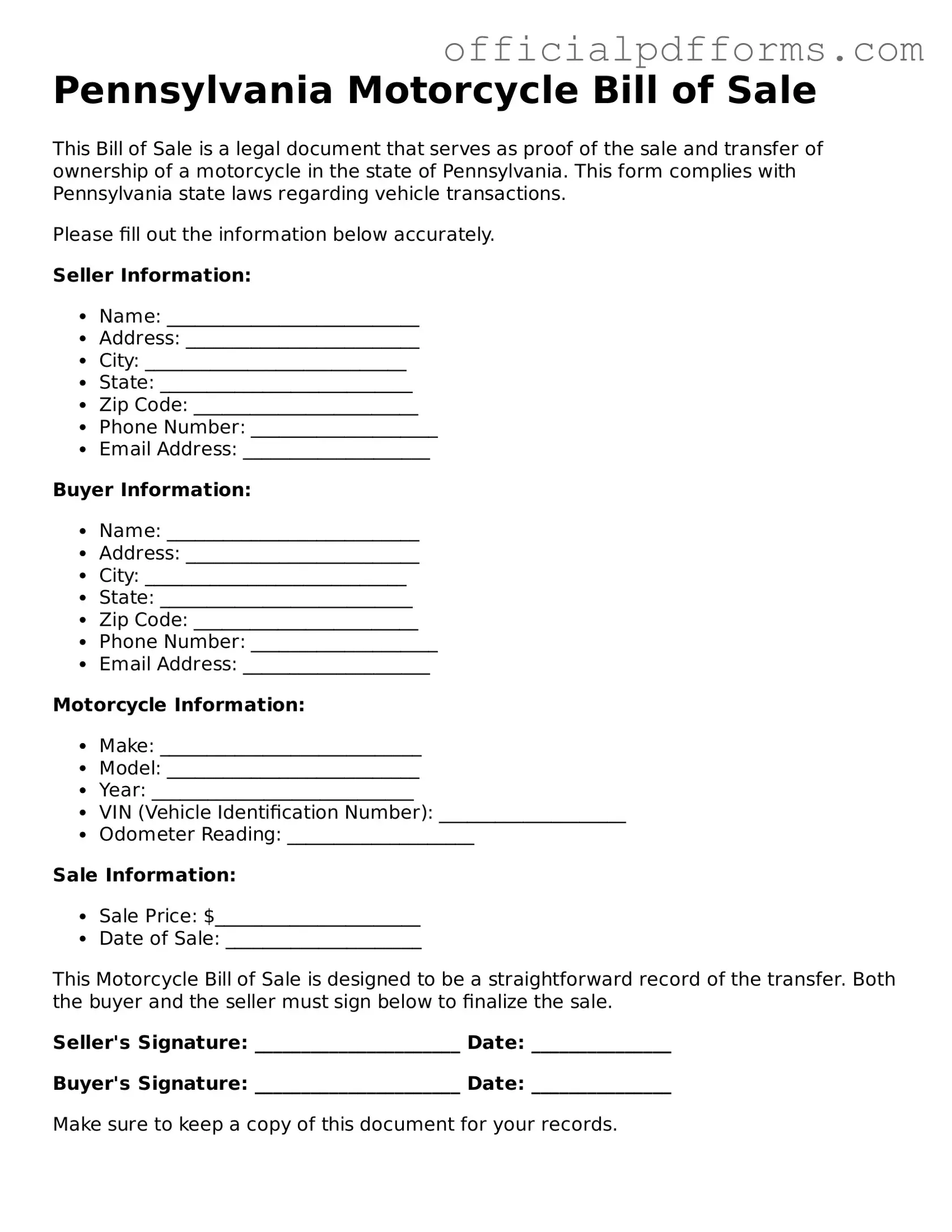What is a Pennsylvania Motorcycle Bill of Sale?
A Pennsylvania Motorcycle Bill of Sale is a legal document that records the sale of a motorcycle between a buyer and a seller. This form serves as proof of the transaction and includes essential details about the motorcycle, the buyer, and the seller. It can be used for registration purposes with the Pennsylvania Department of Transportation (PennDOT) and is particularly useful for establishing ownership and protecting both parties in the sale.
Why do I need a Bill of Sale for my motorcycle?
A Bill of Sale is important for several reasons:
-
It provides legal proof of the transaction, which can be essential if any disputes arise later.
-
It helps establish the new owner’s rights to the motorcycle, particularly when registering the vehicle.
-
The document can protect both the buyer and the seller from potential liabilities associated with the motorcycle.
A typical Bill of Sale includes the following information:
-
The names and addresses of both the buyer and the seller.
-
The motorcycle's make, model, year, color, and Vehicle Identification Number (VIN).
-
The sale price and the date of the transaction.
-
Signatures of both parties to confirm the agreement.
Do I need to have the Bill of Sale notarized?
No, a Bill of Sale does not need to be notarized in Pennsylvania. However, having it notarized can provide an extra layer of security and authenticity, particularly if there are any disputes regarding the sale in the future.
Yes, you can use a generic Bill of Sale form as long as it includes all the necessary information specific to the motorcycle sale. However, using a form specifically designed for motorcycle transactions can help ensure that all relevant details are included and comply with Pennsylvania laws.
What should I do with the Bill of Sale after the sale?
After completing the sale, both the buyer and the seller should keep a copy of the Bill of Sale for their records. The buyer will need it when registering the motorcycle with PennDOT. It’s advisable to store the document in a safe place, as it serves as proof of ownership.
While there is no mandated format for the Bill of Sale in Pennsylvania, it should clearly outline the essential details of the transaction. Many templates are available online, which can help ensure that all necessary information is included. Just make sure that it is signed by both parties.
What if the motorcycle has a lien on it?
If the motorcycle has a lien, it is crucial to address this before completing the sale. The seller should ensure that the lien is paid off and that the title is clear. The Bill of Sale should indicate whether the motorcycle is sold free of any liens or encumbrances. Both parties should verify the status of the title to avoid complications.
